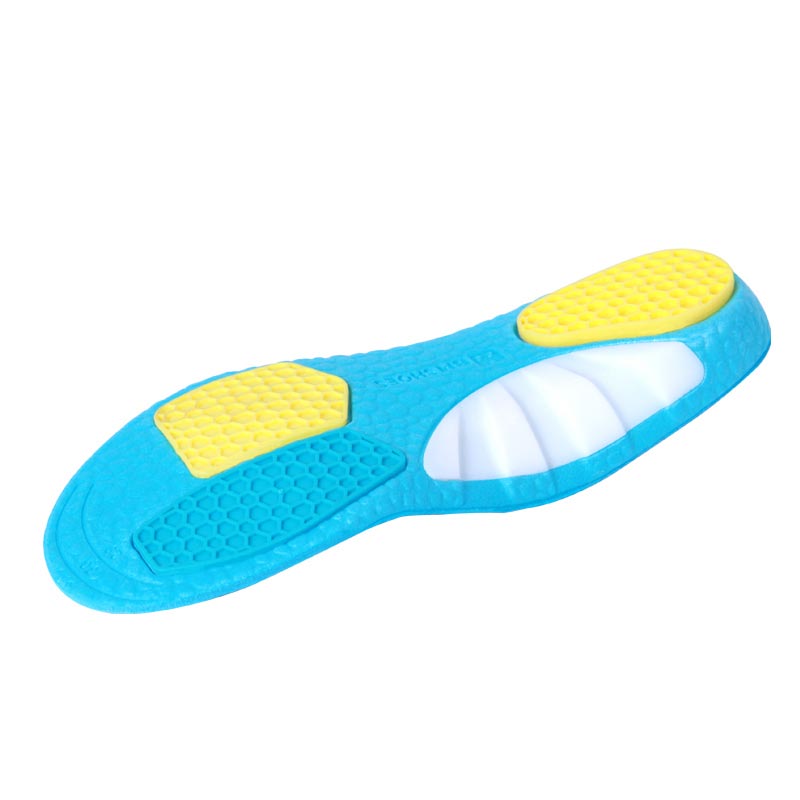Materials and Safety Considerations for Children's Insoles
2025-07-04
Children's insoles play a crucial role in supporting the development of young feet. Whether for everyday wear or specific needs such as flat feet or active sports, the materials used and the safety standards applied must be carefully selected to ensure comfort, functionality, and health. This essay explores the key materials used in children's insoles and the safety considerations that must guide their design and manufacturing.
Key Materials Used in Children's Insoles
EVA Foam (Ethylene-Vinyl Acetate):
EVA is a popular choice for children’s insoles due to its lightweight, cushioning properties, and flexibility. It offers shock absorption and is easy to mold into different shapes, making it suitable for growing feet. EVA is non-toxic and generally considered safe when manufactured correctly.
Memory Foam:
Memory foam insoles offer excellent comfort by conforming to the shape of the foot. This can help reduce pressure points, making them ideal for prolonged use. However, the density and breathability of the foam must be carefully managed to avoid overheating or excessive compression over time.
Gel Inserts:
Gel insoles provide targeted cushioning in high-impact areas like the heel or ball of the foot. For children who are very active, gel components can reduce fatigue and protect joints. The gel material must be securely enclosed to prevent leaks or exposure, which could pose safety risks.
Natural and Breathable Fabrics:
Cotton, bamboo fiber, and wool blends are often used for the top layer of insoles. These materials provide moisture-wicking properties and help prevent bacterial growth, which is important for children's hygiene and skin health.

Antimicrobial Treatments:
To further enhance safety, some insoles are treated with antimicrobial agents to prevent odor and fungal infections. These treatments should be non-toxic and approved for skin contact, especially since children have more sensitive skin than adults.
Safety Considerations
Non-Toxic and Hypoallergenic Materials:
Children’s insoles must be made from materials that are free from harmful substances like phthalates, formaldehyde, and heavy metals. Certifications such as OEKO-TEX or REACH compliance can help ensure the materials are safe for skin contact.
Proper Fit and Support:
Poorly fitting insoles can cause more harm than good by altering gait or placing undue pressure on certain parts of the foot. Insoles should be designed with age-appropriate arch support, heel cups, and flexibility to accommodate foot growth and movement.
Durability and Tear Resistance:
Given the activity levels of most children, insoles must withstand frequent wear and tear. Materials should resist degradation and not pose a choking hazard if small pieces come loose.
Ventilation and Moisture Management:
Insoles must allow airflow to avoid overheating and the buildup of moisture, which can lead to discomfort, rashes, or fungal infections. Perforated designs and breathable top layers help address this concern.
Environmental Considerations:
As sustainability becomes more important, choosing eco-friendly materials like biodegradable foams or recycled fabrics can be both a safety and ethical consideration. Products that are safe for the planet often use fewer harmful chemicals, indirectly improving child safety.
Conclusion
Designing children's insoles requires a careful balance between comfort, durability, and health. By using child-safe, non-toxic materials such as EVA foam, memory foam, gel inserts, and natural fabrics—and ensuring proper ergonomic and safety standards—manufacturers can create insoles that support healthy foot development while keeping children safe and comfortable. As technology and material science advance, the possibilities for safer, smarter, and more sustainable children’s insoles will continue to grow.
As a professional manufacturer and supplier, we provide high-quality products. If you are interested in our products or have any questions, please feel free to contact us.